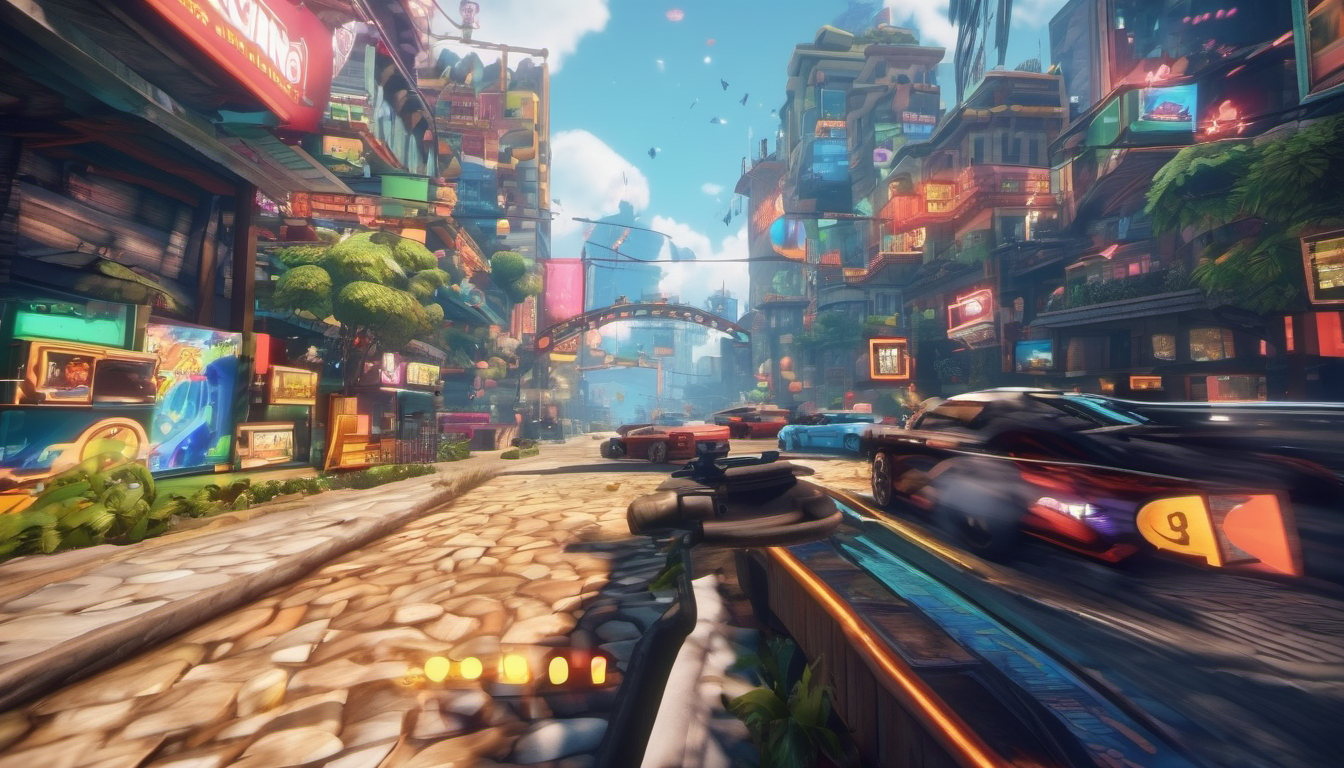In the dynamic realms of pc pictures and computational geometry, speed is of the essence with regards to developing and simulating complicated scenes in real-time. Among the array of gear propelling advancements on this area, cuBVH, a CUDA Mesh BVH acceleration toolkit, has emerged as a leader.
Understanding cuBVH: A Gateway to Efficiency
At the core of cuBVH lies its ability to enhance efficiency in ray tracing and collision detection via a meticulously crafted statistics structure called “CUDA Bounding Volume Hierarchy.” This shape optimizes traversal and intersection checks by organizing geometric primitives right into a tree-like layout, facilitating fast processing for tasks like rendering realistic pix and simulating interactions in virtual environments.
Unveiling the Core Features of cuBVH

Using the Power of CUDA
An essential thing of cuBVH’s prowess lies in its adept usage of CUDA, NVIDIA’s parallel computing device. Leveraging the immense computational power of present day GPUs, cuBVH swiftly executes duties like ray tracing and collision detection. The parallel processing abilities of CUDA permit optimization, enabling real-time processing of scenes with tens of millions of primitives.
Facilitating Integration: Documentation and Resources
- Comprehensive Documentation: The specified documentation accompanying cuBVH affords valuable steering for customers, from installation instructions to operational insights. Developers can without difficulty familiarize themselves with cuBVH’s functionalities and programs through clean commands and illustrative examples.
- Tutorials for Hands-On Learning: A plethora of tutorials cater to builders of various talent tiers, supplying step-by means of-step guidance for powerful usage of cuBVH in tasks. These arms-on physical games allow developers to harness cuBVH’s abilities optimally and discover advanced strategies and optimization strategies.
- Example Projects for Inspiration: A numerous library of example initiatives showcases the versatility of cuBVH throughout numerous programs, which include games, digital reality, and architectural visualization. Developers can draw ideas from these initiatives to expedite their improvement procedure and unencumbered revolutionary opportunities.
Community Support and Collaboration
In addition to professional resources, cuBVH fosters a vibrant network of builders, enthusiasts, and specialists. This collaborative area helps understanding-sharing, hassle-solving, and mutual gaining knowledge of, enhancing the general consumer’s enjoyment and fostering a subculture of innovation.
The Promise of cuBVH: Redefining Real-Time Graphics

cuBVH represents a paradigm shift in actual-time rendering and modeling, supplying an effective CUDA implementation and customizable functions. As the era evolves, cuBVH is poised to redefine the boundaries of real-time pics, riding the field of pc photos closer to new creative horizons.
Read More Here.
Conclusion
In conclusion, cuBVH epitomizes performance within the dynamic realms of computer snap shots and computational geometry. Its seamless integration of CUDA’s power for real-time rendering and simulation duties underscores its significance in advancing the sector. As builders harness cuBVH’s flexibility and functions, the destiny of actual-time rendering and modeling seems brighter than ever, heralding a new technology of innovation and creativity in pc graphics.
By leveraging cuBVH’s talents and resources, developers can propel their pix and modeling initiatives to new heights of performance, speed, and creativity, placing the stage for groundbreaking improvements within the area of computer pictures.
In the fast-paced domains of PC graphics and computational geometry, speed is paramount when developing and simulating complex scenes in real-time. Among the various tools propelling advancements in this field, cuBVH—a cutting-edge CUDA Mesh BVH acceleration toolkit—has emerged as a leader.
Understanding cuBVH: A Gateway to Efficiency
At the heart of cuBVH is its revolutionary ability to enhance efficiency in ray tracing and collision detection through a meticulously designed data structure known as the CUDA Bounding Volume Hierarchy (BVH). This structure optimizes traversal and intersection checks by organizing geometric primitives into a hierarchical, tree-like layout. This design facilitates rapid processing for critical tasks such as rendering lifelike graphics and simulating intricate interactions within virtual environments.
Unveiling the Core Features of cuBVH
- Mesh Processing Module: One of cuBVH’s standout features is its mesh processing module that simplifies pre-processing tasks by constructing the BVH structure. This module drastically minimizes runtime overhead during ray tracing and collision detection, making cuBVH the ideal choice for applications including video games, virtual reality simulations, and architectural visualization.
- Billing and Demos: The tool also supports dynamic scene updates, allowing users to adapt geometry efficiently without compromising performance. This is crucial in scenarios where real-time interaction is required, such as in gaming or live architectural demonstrations.
Harnessing the Power of CUDA
A core aspect of cuBVH’s immense capabilities lies in its proficient utilization of CUDA, NVIDIA’s parallel computing architecture. By leveraging the vast computational power of modern GPUs, cuBVH executes intensive tasks like ray tracing and collision detection with remarkable speed. The parallel processing capabilities inherent to CUDA empower users to process scenes containing millions of primitives in real time, leading to smoother visuals and enhanced user experiences.
Facilitating Integration: Documentation and Resources
- Comprehensive Documentation: The well-organized documentation associated with cuBVH serves as an invaluable resource for users, providing detailed installation instructions and operational insights. Developers can intuitively familiarize themselves with cuBVH’s functionalities through clear explanations and practical examples.
- Hands-On Learning Tutorials: A wide array of tutorials caters to developers of varying skill levels, offering step-by-step guidance on effectively deploying cuBVH in their projects. These interactive sessions enable users to maximize cuBVH’s capabilities and explore advanced optimization techniques.
- Example Projects for Inspiration: An extensive library of example projects showcases cuBVH’s versatility across diverse applications, including gaming, virtual reality, and architectural visualization. These examples not only serve as a source of inspiration but also help developers expedite their development process while unlocking innovative possibilities.
Community Support and Collaboration
Beyond its professional resources, cuBVH nurtures a thriving community of developers, enthusiasts, and professionals. This collaborative space encourages knowledge sharing, problem-solving, and mutual learning, significantly enhancing the overall user experience and nurturing a culture of innovation.
The Future of cuBVH: Redefining Real-Time Graphics
cuBVH symbolizes a monumental leap forward in real-time rendering and modeling, delivering an efficient CUDA implementation along with customizable features. As technology progresses, cuBVH is set to redefine the boundaries of real-time graphics, pushing the field of computer graphics toward new creative frontiers.
Conclusion
In summary, cuBVH exemplifies excellence in the dynamic spheres of computer graphics and computational geometry. Its seamless integration of CUDA’s power for real-time rendering and simulation tasks underscores its critical role in advancing this industry. As developers leverage cuBVH’s flexibility and capabilities, the horizon for real-time rendering and modeling appears more promising than ever, heralding a new era of innovation and creativity in computer graphics.
Unlock the Full Potential of Your Graphics Projects with cuBVH—Dive in Today!




![[1:41 pm] Chuck Mannella https://mindsatplayny.com/](https://fitosterina.com/wp-content/uploads/2024/10/20241010_193202.jpg)
